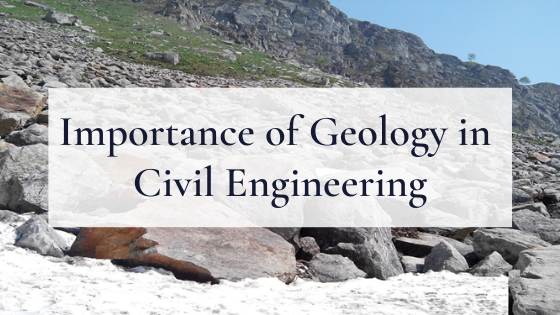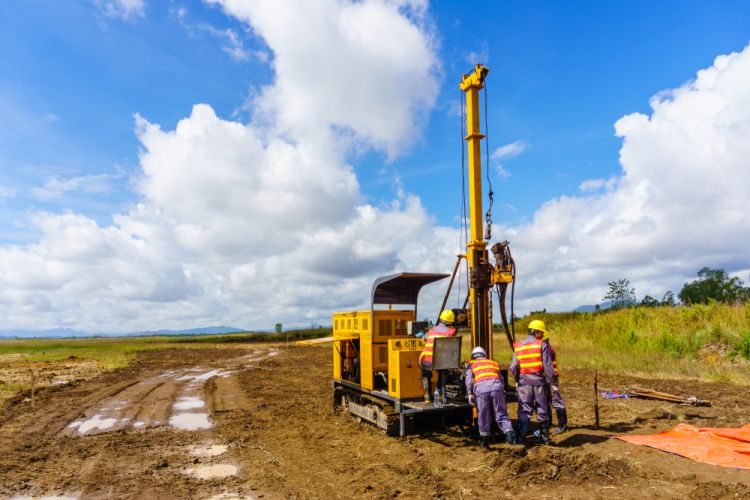The 3-Minute Rule for Geotechnical Engineering For Construction Projects
Our Geotechnical Engineering For Construction Projects PDFs
Table of ContentsLittle Known Facts About Geotechnical Engineering For Construction Projects.The Best Strategy To Use For Geotechnical Engineering For Construction ProjectsSome Known Details About Geotechnical Engineering For Construction Projects 5 Simple Techniques For Geotechnical Engineering For Construction ProjectsSee This Report about Geotechnical Engineering For Construction Projects
Consequently, during the investigation, it is essential to pierce at the required depth and the required variety of holes according to the recommendation of the Canadian Foundation Layout requirement. Sometimes, the owner could conserve some Geotechnical Investigation expense yet wind up spending more than the expected throughout the construction cost.The obligations of the geotechnical professional entail giving material testing for construction support. Geotechnical Engineering for Construction Projects. Geotechnical engineers analyse all the field test records to ensure that construction is going on as per the project specification. During construction, a confirmatory test for soil compaction is done on-site to ensure that no future settlement happens
After the concrete is poured -7 days and 28 days- tests are carried out on concrete examples gathered from the website to make certain that the concrete put fulfills the style requirement. Asphalt core is taken after the Asphalt is laid and compressed to verify that it satisfies the style criterion. All research laboratory test reports are analysed by the Geotechnical Designer to make sure that it satisfies the project specification.
The 3-Minute Rule for Geotechnical Engineering For Construction Projects

Geotechnical design plays an important duty in guaranteeing the stability of construction tasks. Geotechnical design is an important branch of civil design that concentrates on comprehending the behaviour of earth products, such as soil and rock.

For a dependable structure and a smooth construction procedure, count on to provide the knowledge you require. Contact to obtain expert suggestions and geotechnical services customized to your following project.
Fascination About Geotechnical Engineering For Construction Projects
When starting a land growth task, recognizing the ground beneath your feet is as critical as the structures you plan to build over it. Our Geotechnical Engineering group evaluate the ground, ensuring it is ideal for the recommended development while providing you with the information required to fulfill your job objectives.
Geotechnical Engineering checks out the formation of the ground, as it is the building blocks for all tasks. Where frameworks need to be created with regard to the ground conditions; ground problems (e.g., soft ground) might need enhancing relying on the size of the intended framework. Prior to structure, you need to find out about the groundwater, dirt framework, and liquefaction probability of your land.
For sites that are not linked on the neighborhood authority facilities additional website examinations would be needed to supply technical inputs for on-site stormwater and wastewater. We have actually experienced Geotechnical Engineers based in each office, supporting your geotechnical needs nationwide. Get to out to us to review exactly how we can sustain your next task.
These records are customized to meet the details requirements of a project and include design parameters and suggestions for the building of a range of synthetic published here frameworks. Along with providing consultancy solutions covering locations such as slope security and load-bearing capacities for different products, these designers carry out r & d tasks to improve methodologies, tools, products knowledge and analysis covering entire lifecycles.
Geotechnical Engineering For Construction Projects - Truths
Prices of pay generally raise as your knowledge and skills expand, with standards aiming to a graduate beginning wage of in between 18,000 and 28,000 per year in the UK. This increases to 26,000 to 36,000 with a few years of experience and afterwards reaching 40,000 to 60,000+ for senior, legal or master engineers.
With the right application it is possible to understand the occupation and gain entrance to a challenging yet gratifying and important job. A rock hound would certainly require to retrain to become a geotechnical designer, although there is a lot of cross-over between both careers, which might make this much easier - Geotechnical Engineering for Construction Projects. Geologists require to have an understanding of soils, rocks and other products from a scientific point of view, while geotechnical designers story their understanding of issues such as soil and rock technician, geophysics and hydrology and apply them to design and ecological jobs
When beginning, these designers will certainly often tend to work with less complicated projects, developing expertise and experience all set for even more challenging work later. Geotechnical designers tend to specialise in certain areas as they expand in experience, concentrating on certain facilities such as trains, roads or water. These designers also deal with renewable resource, offshore and onshore oil and gas, nuclear power, and more.
Rumored Buzz on Geotechnical Engineering For Construction Projects
The time taken to end up being a geotechnical engineer depends on where you are based, where you research and what level of education you desire to acquire before entering the workplace. Generally-speaking it takes 3-4 years to reach the standard needs to start an occupation as a geotechnical engineer.
These operations enable professionals to analyze a host of soil auto mechanics including weight, porosity, void-to-solid particle proportion, leaks in the structure, compressibility, optimum shear toughness, birthing capacity and deformations. If the framework requires a deep foundation, designers will utilize a cone infiltration examination to estimate the quantity of skin and end bearing resistance in the subsurface.
When evaluating a slope's equilibrium of shear stress and shear stamina, or find more its ability to endure and undertake motion, rotational slides and translational slides are generally thought about. Rotational slides fall short along a rounded surface, with translational slides occurring on a planar surface. A specialist's goal is to determine the problems at which a slope failing might occur.
Typically, findings recommend that a site's dirt must be treated to improve its shear toughness, stiffness and leaks in the structure prior to design and construction. When it comes time to set out structure plans, professionals are significantly concentrated on sustainability, even more particularly just how to reduce a structure's carbon footprint. One method has been to replace 20 percent of a foundation's concrete with fly ash, a waste item from coal fire power plants.